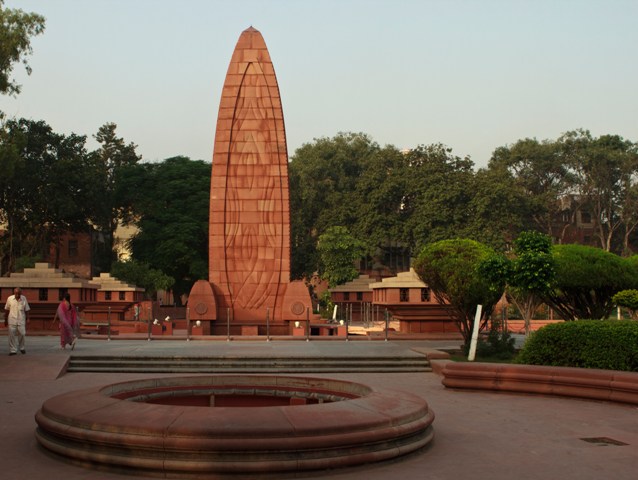 The Jallianwala Bagh memorial at Jallianwala Bagh, Amritsar provided a royal anecdote in India. [photo: Alamy]
The Jallianwala Bagh memorial at Jallianwala Bagh, Amritsar provided a royal anecdote in India. [photo: Alamy]
[This is an excerpt from an article in The Round Table: The Commonwealth Journal of International Affairs. Opinions do not reflect the position of the Round Table Editorial Board.]
My first encounter with British royalty was way back in the 1960s as a fifteen-year-old in Bombay. The Queen was on a state visit, staying at Raj Bhavan, residence of the Governor of Maharashtra, who was a friend of my parents. They had been invited to a reception for her, and my mother took me instead of my father, who was away travelling. Amid the large crowd, full of bejewelled, sari-clad dowagers, I strained to catch a glimpse of Her Majesty, resplendent in tiara and diamonds, walking down the aisle, flashing a slightly horsey smile and patiently shaking hands with her elegant white gloves.
It was evidence of an abiding Indian fascination with the royal family long after we jettisoned them for our more modest presidents. Their portraits still hung in several Bombay drawing rooms, especially among Anglophile Parsis. I remember my mother attending another Raj Bhavan reception for Prince Philip, returning delighted that he had flirted with her and other pretty ladies and charmed by his wicked, irreverent sense of humour. And then, two decades later, came the fascination with ‘Lady Di’ and the Wales marriage, as the drawing-rooms of Bombay and Delhi resounded with the claims of either party.
The royal family have returned this adulation from their former empire by ceaselessly touring the Commonwealth, including some of its least inviting climes, and allowing themselves to be literally pawed, jostled or more metaphorically mangled by local media. And they have managed through all this to look cool, elegant and cheerful, and to avoid, for the most part, ruffling feathers.
Prince Philip has been the occasional wild card. We all remember his warning to a Western student in China about getting slit eyes if she stayed too long. I also remember the curator of the Jallianwala Bagh Memorial in Amritsar complaining that Philip, visiting with the Queen, had disputed the ‘highly exaggerated’ casualty figures of the massacre there on the official plaque.
Such remarks might indicate a certain casual racism, but are they really evidence of anything more institutional? I have no doubt that there are members of the royal family, as of most other families, who might have the occasional embarrassing racist thought or comment. My own Indian family and friends are far from exempt. But having lived in Britain for half a century, I never cease to be impressed by how inclusive it has become, and how far the royals too have moved with the times.
Take Diana and her AIDS championing, Charles and his environmentalism, the appearance of black guards-officers and palace staff and the far more racially inclusive tone of royal pronouncements and visits. Most of all has been the enthusiastic welcome given to the first woman of colour to marry into the inner royal family circle. We can all remember Meghan’s glittering wedding at Windsor Castle, with her own black mother prominent and a black choir, surrounded by warm, unfeigned smiles of delight from the Queen and other close family, not to mention their warm welcome a year later for the first mixed race royal child, Archie. There followed so many other public engagements at which the new royal duchess was prominent.
How all this turned sour and was transformed into the worst family crisis since the 1936 abdication will be picked over for years to come by agony aunts and uncles. As a historian, I see it as a lost opportunity for which the Duchess must share responsibility. The wives of second sons play a minor role in the House of Windsor, occasionally seen and hardly ever heard. Meghan’s growing sense of grievance seems to stem from her reluctance to accept such a subordinate role, always a step behind her sister-in-law.
Zareer Masani is an historian and biographer.



